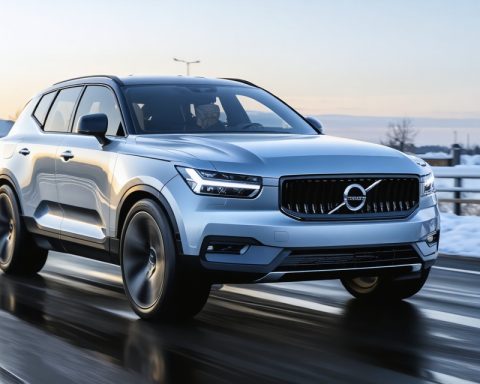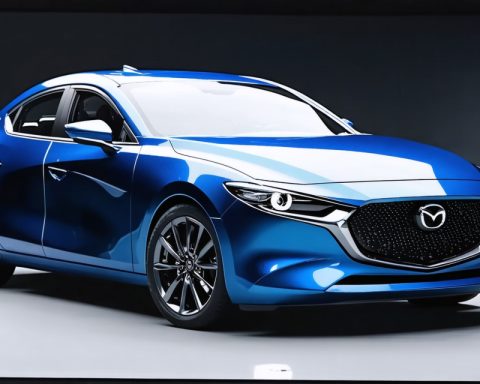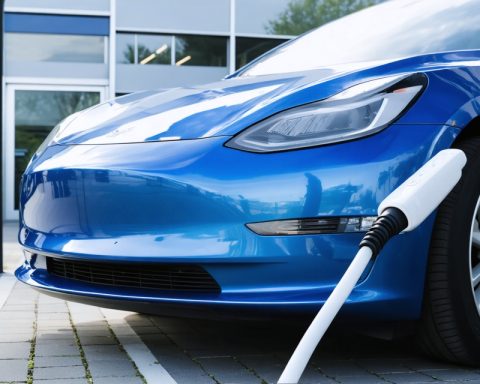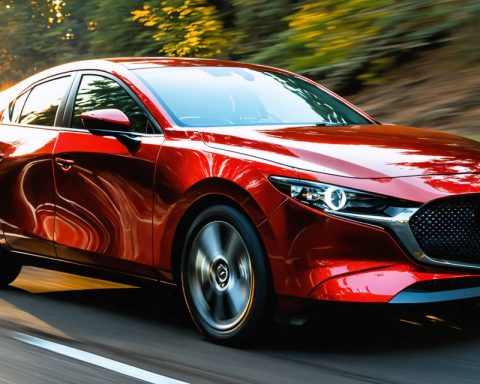- BYD has surpassed Tesla in annual electric vehicle (EV) sales, asserting its dominance in global EV innovation.
- The new battery technology by BYD allows charging of 250 miles in five minutes, outpacing Tesla’s Superchargers.
- BYD’s “God’s Eye” driver-assistance system offers advanced features at no extra cost, enhancing its competitive edge.
- Focusing on affordability, BYD’s Qin and Song models offer clean-energy vehicles at lower starting prices than Tesla.
- Wang Chuanfu, BYD’s founder, transformed the company into an industry leader, starting with modest resources.
- BYD is expanding globally despite U.S. tariffs, with its electric buses operating in places like California.
- BYD’s story highlights the power of bold innovation and affordability in shaping the clean-energy vehicle market’s future.
Nestled in the bustling streets of Shenzhen, a quiet revolution is unfolding as BYD, a Chinese electric vehicle (EV) manufacturer, accelerates past Tesla in the race for automotive supremacy. With an aggressive spirit, BYD has emerged not just as a competitor, but as the new front-runner in global EV innovation and sales. This surge has already seen BYD surpass Elon Musk’s Tesla in annual sales, asserting its dominance with strategic advancements unmatched in the industry.
Picture this: a car that can charge 250 miles of range in just five minutes. This remarkable feat belongs to BYD’s newest battery technology, a marvel that leaves Tesla’s Superchargers trailing behind, adding only 200 miles in 15 minutes. Meanwhile, BYD’s launch of “God’s Eye,” a sophisticated driver-assistance system, further amplifies its lead by providing advanced features at no extra cost. BYD’s relentless pursuit of excellence ensures it remains a beacon of innovation and affordability in an increasingly competitive market.
Emphasized on affordability rather than branding, BYD’s strategy caters to a wide demographic, appealing especially to those drawn by financial accessibility. The Qin and Song models, which lead its sales, exemplify this approach with starting prices significantly lower than Tesla’s offerings. The Qin, a compact sedan, and the Song, a versatile SUV, echo BYD’s mission to democratize clean-energy vehicles.
Behind the company’s ascension is Wang Chuanfu, a visionary whose journey resembles a classic rags-to-riches tale. Orphaned in his teens in Anhui province, Wang’s indomitable spirit propelled him through academia to the founding of BYD with borrowed funds and a modest team. His first major move was purchasing a faltering state-owned automaker, a decision initially met with skepticism but proven astute as he dissected technologies from industry giants to forge BYD’s path.
From its Chinese base, BYD’s influence is proliferating globally, despite tariffs keeping its passenger vehicles out of the U.S. market. Its electric buses, however, are already carving out a presence on American soil, including routes in California. The company’s strategy to corner overseas markets remains robust as it aims to expand its footprint across Europe, South America, Southeast Asia, and beyond.
The lesson in BYD’s story is clear: innovators who dare to redefine their playground with bold advancements not only capture markets but reshape them. As clean-energy vehicles transition from novelty to necessity, companies like BYD, with their commitment to innovation and affordability, will continue to steer the industry towards new horizons, leaving an indelible mark on the future of transportation.
BYD’s Rise to Dominance: How It Overtook Tesla and What the Future Holds
How BYD Surpassed Tesla: Key Factors in its Success
BYD’s remarkable rise in the electric vehicle (EV) industry is shaping the future of transportation, prompting industry leaders and consumers alike to take notice. Here’s a deeper dive into BYD’s strategies, technologies, and impacts that propel it ahead of its competitors like Tesla.
Cutting-Edge Battery Innovations
BYD’s new battery technology, which can charge a vehicle for 250 miles of range in just five minutes, is a game-changer. Compared to Tesla’s Supercharger, which adds 200 miles in 15 minutes, BYD’s technology offers faster and more efficient charging. This advantage can significantly enhance the user experience and reduce downtime, providing a competitive edge in the EV market, especially in regions where charging infrastructure is still developing.
Advanced Driver-Assistance Systems
The introduction of “God’s Eye,” BYD’s driver-assistance system, elevates the company’s vehicles by integrating advanced safety and navigation features at no additional cost to the consumer. This strategic move not only enhances the appeal of their cars but also addresses increasing consumer demand for enhanced safety features in vehicles.
Market Accessibility and Affordability
BYD’s focus on affordability, exemplified by the Qin and Song models, has widened its consumer base. Unlike Tesla models, which are often priced at a premium, BYD offers high-quality, budget-friendly options. This approach not only democratizes access to clean-energy vehicles but also solidifies BYD’s position in diverse global markets.
Strategic Leadership and Global Expansion
Founder Wang Chuanfu’s leadership melds vision with strategic acumen, which has been crucial in transforming BYD from a modest start-up into a global powerhouse. The company’s aggressive strategy includes expanding into emerging markets such as Southeast Asia and Latin America, and establishing a foothold in Europe. Although tariffs have restricted its passenger vehicles from entering the U.S. market, BYD’s electric buses have already found a niche, laying the groundwork for future expansion.
Real-World Use Cases
A practical example of BYD’s impact is its electric bus presence in cities like Los Angeles, California, where they help cut emissions and offer sustainable public transportation solutions. These deployments highlight BYD’s potential in influencing urban transport policies across the globe.
Future Industry Trends and Predictions
Market Forecasts: As countries strengthen their commitment to reducing emissions, the demand for affordable electric vehicles is expected to rise. BYD’s ongoing expansion and pricing strategy position it favorably to capture increased market share.
Sustainability: BYD’s manufacturing process includes advanced recycling techniques and sustainable materials, which can appeal to eco-conscious consumers and align with global environmental goals.
Competitor Analysis: While Tesla remains a major player with its strong brand identity and innovations, BYD’s accessibility and rapid technological advancements may attract a broader customer base, especially in price-sensitive markets.
Pressing Questions and Answers
1. Is BYD poised to dominate the global EV market?
– With its rapid technological advancements and strategic pricing, BYD is well-positioned to become a leading force in the global EV industry.
2. Will BYD’s vehicles be available in the U.S. soon?
– While passenger vehicles face tariff challenges, BYD’s electric buses are already available. Their success could pave the way for passenger cars in the future.
3. How does BYD’s “God’s Eye” compare to Tesla’s Autopilot?
– While Tesla’s Autopilot has a longstanding reputation, “God’s Eye” offers comparable features that may appeal to cost-conscious buyers seeking sophisticated driver-assistance technologies at no extra cost.
Actionable Recommendations
– Consumers: Consider BYD models if affordability and advanced features are a priority. The Jin and Song offer great value with their technological capabilities.
– Investors: Evaluate BYD’s market strategies and financial performance as it expands in rapidly growing EV markets, as it holds potential for significant returns.
– Policymakers: Explore collaborations with companies like BYD to accelerate the transition to sustainable urban transport solutions through electric buses and other innovations.
For more insights and updates on electric vehicles and sustainable technologies, visit BYD.













